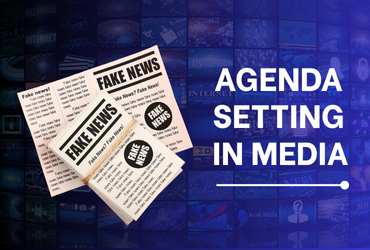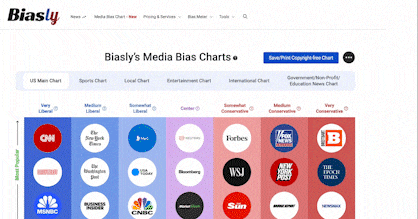
News outlets exist to share important events and opinions with the public. But with growing concerns about media bias, many readers are questioning how objective these news sources truly are. Is it possible for the presentation of these things to actually influence readers’ views? Shaping public priorities means guiding the interests and concerns of the wider community. News outlets aim to inform and represent the public at both the local and national levels. And in an effort to simplify complex issues, the media often highlights certain aspects over others. This can reinforce or downplay particular ideas.
So, the press acts not just as a mirror, but as a shaper of public opinion. Today’s media landscape is fast-paced and widespread, thanks to digital platforms and new technology. What once took hours to print can now spread globally in seconds. Journalistic tools have changed, but the core purpose of informing remains similar, as well as its intended and unintended consequences.
Let’s discuss strategies the media uses to guide public attention. But before we’re done, studying the evolution of journalism will put our media literacy skills to the test. The press has existed long before smartphones. Dipping back in time can help simplify complexities that can feel amplified or distorted by modern digital platforms.
Agenda Setting
Maxwell McCombs developed the Agenda Setting Theory in 1972 to better understand the relationship between public opinion and media. The theory suggests that the media doesn’t tell people what to think, but rather what to think about. Instead of changing public opinion directly, media coverage highlights specific issues and elevates their importance in public discourse. This emphasis shapes perception by increasing issue salience, or how significant or urgent the public believes an issue to be.
Agenda Setting shifts from focusing on direct persuasion to influence through strategic emphasis and repeated exposure. This laid a foundation for future research in media effects, political messaging, and how public opinion is formed. Today, we might be more familiar with selection bias, or the intentional omission of information. Selection bias would fall under the umbrella of agenda setting when discussing strategies and forms of repeated exposure.
Worried news consumers like you are the only ones being influenced? Students in the Department of Computer Science at University College London decided to look deeper into the phenomenon. In their study, they found that news outlets often influence each other in shaping public narratives, a concept known as intermedia agenda-setting. Some sources act as leaders, consistently shaping the tone and focus of coverage across the media landscape. Meanwhile, others lag, picking up on sentiment after it’s already established. These dynamics suggest that not all news voices carry equal weight. In today’s fast-moving ecosystem, understanding who sets the tone is just as important as what is being said.
Stern, S., Livan, G., & Smith, R. E. (2020). A network perspective on intermedia agenda-setting. Applied Network Science, 5(1), 1-22. https://doi.org/10.1007/s41109-020-00272-4
Framing
Framing refers to the angle or perspective a story takes, which influences how the audience interprets its meaning. For example, a liberal outlet might describe a protest as a “demonstration,” while a conservative one might call it a “riot.” The language outlets choose leads readers to prioritize different aspects of the same event or social issue. This isn’t about censorship but rather the order, tone, and emotional emphasis placed on certain themes or viewpoints. Framing doesn’t control facts; it controls perception by influencing how events are categorized and emotionally understood.
As a reader, you’re probably not aware of how often you’re exposed to framing in articles, posts, and billboard signs. To develop your media literacy skills, pull up your usual news sources and see just how much framing you can identify. Platforms like Biasly can help compare and contrast sources to find articles free of framing or emotional language.
Priming
In turn, priming asks: What happens when media repeatedly guide attention toward specific topics or values? It affects how we evaluate leaders or events by changing the mental benchmarks we subconsciously use. If news consistently highlights crime, audiences become more likely to prioritize “law and order” at the polls. This repetition forms a kind of cognitive shortcut, which institutions exploit to align target audiences with their agenda.
Political debates often feel disorienting for this very reason. Each side presents a reality built on different primed concerns. They use confirmation bias to select facts that support their worldview, avoiding direct engagement with opposing perspectives. When each party references separate current events, they will often stick to rehearsed themes and avoid the other’s evidence or concerns. Instead of a debate, the conversation resembles parallel monologues centered around incompatible assumptions.
Elections intensify the contrast that differences in priming produce. However, they also offer researchers a clear view into how media shapes perception. The National Library of Medicine features a 2023 study that demonstrates the extent to which exposure to media content impacts voting behavior. In a series of pre-registered online experiments, participants were exposed to fictitious news reports featuring names of non-existent political candidates. The results revealed that repeated exposure to these names led to a consistent preference for candidates whose names appeared more frequently, even in the absence of substantial information about their policies or qualifications. This phenomenon, known as the “mere exposure effect,” suggests that the frequency of media coverage can shape voter perceptions and influence electoral outcomes, highlighting the power of media in priming public priorities.
Media Ownership
This raises the question of how media ownership influences public opinion. Priming becomes more intentional when outlets have incentives to advance specific policy goals. For example, Fox News is known for being the leading News source among right-leaning readers. According to Pew Research, 47% of consistent conservatives rely on Fox News as their primary source for government news and 88% express trust in it. Hence, its revenue model is closely tied to a predominantly conservative audience. This implies higher profit for content that upholds right-wing values.
When outlets catch wind of what the public already prioritizes, they can capitalize on it, creating a self-reinforcing cycle of influence. In these cases, shaping public priorities often looks less like changing minds and more like amplifying existing beliefs.
This dynamic highlights the importance of media bias and news analytics platforms, such as Biasly, which help identify biased news articles and media leanings across the political spectrum. The Biasly Chrome extension and media bias chart provide valuable tools for finding more balanced and unbiased news sources.
The Media as a Shaper of Social and Political Reality
Journalism has long navigated political controversy. Depending on how it is used, it diffuses or escalates conflict. Media literacy education promotes responsible reading by uncovering the political and social impact of media coverage. Major historical events, in particular, often accelerate changes already underway, exposing shifts in tone, structure, and style. Because media evolves with the times, these pivotal moments offer valuable insight. Let’s look to the past to find patterns in the noise and clarity in complexity.
The media became a strategic piece in gaining victory in World War 1 and World War 2. Governments utilized what is known as wartime propaganda to inspire patriotism in their nations and align their citizens under a common objective. The Library of Congress preserves posters and cartoons that serve as primary sources from this period of media influence. It notes, “the impact of the poster as a means of communication was greater than at any other time.” These visuals used framing to portray war as noble, patriotic, and filled with camaraderie between brave, disciplined young soldiers. For example, posters showing “the brave throng that goes marching along” inspired enlistment through imagery of honor and unity.
Once national threats calmed down, people started focusing more on issues closer to home. Media influence became more decentralized as government control over messaging faded, and this created space for new ethical dilemmas. Would reporters remain neutral, or would they use their platform to condemn injustice? The Civil Rights Movement became a defining moment where media and activism intersected with transformative impact. Derogatory terminology ceased to be one-sided in the public eye, and ordinary citizens engaged with local politics through demonstrations and sometimes violence. Studies show the movement’s success was partly due to strategic media exposure and collaboration between activists and journalists. Protestors welcomed cameras, knowing their visibility mattered. The media brought the images of protestors on the streets into living rooms across America. One of the best examples is NBC, CBS, and ABC’s extensive coverage of Martin Luther King Jr.’s “I Have a Dream” speech.
During the Cold War, media coverage of communism set the public agenda, intensifying national anxiety and policy support. Initially, outlets offered uncritical, lengthy airtime to McCarthy’s claims—an example of media telling audiences what to think about rather than what to think.
As McCombs and Shaw put it, “Readers learn … how much importance to attach to a topic from the amount of information in a news story and its position.” Such framing encouraged citizens to assist in identifying suspected “subversives,” a direct behavioral response to media salience. Eventually, the media shifted from amplification to accountability, accompanying extremist quotes with evaluations of their accuracy. Yet because communism remained a top agenda item, public support for military spending and nuclear buildup continued to increase.
Media Acceleration in the Digital Age
Today, the media moves faster than ever before. News spreads instantly, eliciting reactions before facts can be confirmed or verified. Pew Research shows 25% of Americans often get news from social media. The number for Americans getting news from news websites or apps leads by only a 2 percentage point increase. Social media platforms reward speed over depth and even lead to rushed reporting and viral misinformation. In this environment, the boundaries between journalist, influencer, and citizen blur. As modern technology progresses, speed and visibility now compete with accuracy and reflection.
Another 2024 study examined the relationship between political engagement and social media as it began growing. “Mobile election consumers” are said to be more active than other Americans, and 58% are more likely to encourage people they know to support a particular candidate.
Here are some elements of today’s digital environment:
- Groupthink– Online echo chambers encourage conformity, suppress dissent, and reward agreement, limiting exposure to opposing ideas or critical thought.
- Algorithms– Personalized feeds prioritize engagement over truth, creating self-reinforcing content loops that amplify bias and filter out complexity.
- Virality over Verification– Posts that provoke emotion spread faster, even when inaccurate, undermining trust and skewing public priorities.
- Decentralized Information– Anyone can publish news-like content, but without traditional editorial standards, misinformation spreads without accountability.
- Click-driven Revenue– Outlets chase attention with sensational headlines, framing stories to maximize views instead of promoting understanding.
These dynamics accelerate agenda setting by magnifying certain issues repeatedly. If you take a closer look, it isn’t hard to see that public concern has begun taking shape according to the digital exposure it faces.
So, How do News Outlets Shape Public Priorities Today?
In an age of digital saturation, the question isn’t if media shapes us, but how we stay aware of its influence. We’ve explored how agenda setting, framing, and priming steer attention, interpretation, and memory. These tools guide what issues seem urgent or true.
To apply media literacy, we looked at journalism’s past, not just to analyze bias, but to understand how media power evolved. From wartime propaganda to civil rights coverage, the media has shifted between informing, persuading, and amplifying political or cultural movements. These examples reveal a pattern: journalism reflects society but also drives public emotion, urgency, and sometimes direct action.
Over time, journalism became faster, more fragmented, and more emotional. Digital tools intensified this shift and expanded who can shape the narrative. Now, news outlets compete for clicks, and public priorities are often shaped by repetition, outrage, and filtered feeds, not careful investigation.
So, how do outlets shape public priorities? Through what they highlight, how they frame it, and how often we see it. Awareness is key. By knowing how media influences us, we become more intentional readers—and more responsible participants in public life.


























